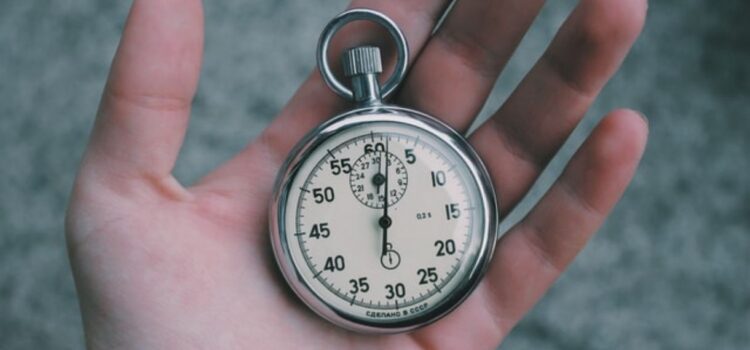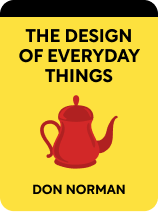

This article is an excerpt from the Shortform book guide to "The Design of Everyday Things" by Don Norman. Shortform has the world's best summaries and analyses of books you should be reading.
Like this article? Sign up for a free trial here .
What are the types of memory in humans? What do the types of memory have to do with design?
There are several types of memory in humans. In order to create good designs, you have to take into account the ways humans process and form memories.
Read more about the types of memory in humans and what it means for design.
Types of Memory in Humans
This section dives deeper into the different types of memory. It’s important for designers to have a working understanding of each type of memory, particularly in the digital age, as increasingly complex technology requires users to combine “knowledge in the head” with “knowledge in the world” in more and more sophisticated ways.
Digital passwords are an especially important example of this effect. While new technologies make it much easier to store knowledge in the world, doing so makes the information far less secure, since knowledge in the world is accessible to anyone in that environment. To protect private information, computer systems require passwords. Simple passwords were sufficient at first, but the rise of hacking and the ability to store sensitive information like bank records online quickly required a new approach to security. Now, most programs have complex password requirements that use a combination of numbers, letters, and symbols. Some programs require the password to be changed on a regular basis.
Unfortunately, all this added complexity has created less security, not more. The design of this system does not account for the limits of human memory. Simple passwords that held personal meaning were easy to remember, but long strings of random characters are not. To cope, we write them down. We store sensitive information (like banking information or medical records) in the world, then require knowledge in the head (a password) to access it. But that knowledge is too complex to remember, so we put it back into the world. The system has defeated itself.
The most secure systems combine the two sources of knowledge by requiring both “something you have” and “something you know.” A physical object like a key is knowledge in the world—it doesn’t need to be stored in memory, but can be used by anyone, not just authorized users. But a security system that requires both a physical object and a password allows for privacy without putting all the burden on human memory.
Short-Term Memory
One of two types of memory is short-term memory. As the name implies, short-term memory is the automatic storage of recent information. Short term memory is also called “working memory” because it is the information we keep in our minds in order to complete any given task.
The information held in short-term memory is constantly being replaced as we encounter new stimuli, so holding onto any piece of information for more than a second requires rehearsal, or consistently repeating the information until it’s no longer needed (like when you hear a phone number spoken aloud and repeat it to yourself over and over while you search for a pen to write it down).
The science of memory is complicated, but a simplified conceptual model is all we need for design purposes. Think of short-term memory as five to seven mental “slots” where recent information is stored. If all the slots are filled when a new piece of information comes along, it will knock out an older piece of information and take over that slot. It is possible to keep more information in working memory through the use of mnemonics, or techniques that enhance memory by making meaning out of meaningless data.
Guidelines for Designers
- Don’t require people to use short-term memory at all if possible, but certainly not for more than a few seconds or for more than five items (although the average person can store five to seven items in short-term memory, Norman recommends erring on the side of caution and using three to five as a practical limit). For example, for computer programs, let users keep relevant information (like confirmation codes) on screen until they manually exit the window.
- Use multiple sensory modalities to convey information (such as audio and visual, or visual and tactile). The brain processes information from different sensory channels separately, so one piece of information is less likely to overwhelm another. This is why GPS devices give audible instructions while the driver visually focuses on the road.
Long-Term Memory
The second of the two types of memory is long-term memory. If information is important enough or rehearsed often enough, it moves from short-term memory into long-term memory. Long term memory is more robust, and memories encoded here do not automatically replace other memories. While we encode and access short-term memory automatically, it takes time to encode long-term memories, and it typically takes time to access them later.
We still don’t know exactly how short-term memories become encoded into long-term memory, but most scientists agree that this process happens during sleep. This is important for anyone designing a product or system that requires users to store information in long-term memory—that process typically is not instant, and it might require several encounters with the information with periods of sleep in between.
Information stored in long-term memory is much more durable, but there is an important caveat here: memories are encoded based on our interpretation of events, not as they really happened. Much like performers reciting epic poetry, we don’t remember every single detail of an event, but rather the main details and our subjective interpretation of them. This also means that each time the memory is recalled, we are recreating it based on that limited information. So each time we access the memory, we inadvertently change small details of it and then re-encode that version of events. This process has powerful implications for law and criminal justice settings, since it demonstrates just how unreliable eyewitness testimony can be.
Guidelines for Designers
- Keep formatting consistent across products. For example, while each new iPhone model introduces new features, the basic layout and mechanics (like pinching to zoom and locating volume buttons on the left edge) have stayed consistent. The knowledge of how to use an iPhone is already encoded in users’ long-term memory, and Apple takes advantage of this to create an experience where users can feel a satisfying sense of mastery, even with a brand new product.
- Design for the whole experience. Because we encode long-term memories subjectively, memories formed as part of a positive experience will be remembered positively, even if the actual information being remembered is emotionally neutral.

———End of Preview———
Like what you just read? Read the rest of the world's best book summary and analysis of Don Norman's "The Design of Everyday Things" at Shortform .
Here's what you'll find in our full The Design of Everyday Things summary :
- How psychology plays a part in the design of objects you encounter daily
- Why pushing a door that was meant to be pulled isn't your fault
- How bad design leads to more human errors






